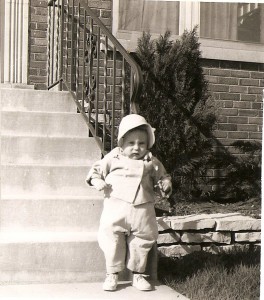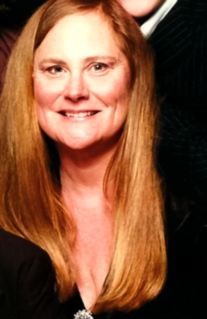Self Image to True Self
Self Image to True Self
Paper for the 2013
International Association for the Study of Dreams (IASD) PsiberDreaming Conference (PDC)
© by Beverly (Kedzierski Heart) D’Urso
As a newborn baby, Bev didn’t view herself as a separate person. Her true self looked out of her eyes, and she heard and felt a world, not around her but of her. At a few months old, her mother put a mirror in front of her. Bev saw an image with which she soon identified. When she felt happy, the image would smile. Bev began to think of the image as her true self. One day, the mirror fell and broke. Bev felt sad that she could no longer see her true self. She felt abandoned by her true self that seemed to no longer exist.
Soon, however, Bev began to walk and talk. Her parents pointed to her body and said her name. When she danced and teased they said, “That’s our little Bev!” Bev soon viewed her body and personality as her true self. Now she felt silly that she thought of her reflection as her true self. She saw her true self as a separate individual in a vast world, where she seemed to create her own thoughts, feelings, and ways of moving.
Every morning, Bev’s father would come to her room to kiss her goodbye before leaving for work. One morning, when she had just turned eighteen months old, she hid under the covers. Her father, probably running late, left without even saying goodbye. She felt horrible and guilty that she’d hidden from him. Immediately, she climbed out of her crib for the first time, and ran across the house to the front door. He hadn’t locked it, so she flew out the door. Bev ignored the six cement steps because she had not yet learned to climb stairs. She crashed at the bottom, landing spread-eagled on her back with a broken collar bone. She cried and screamed with pain and fear.
The next thing she knew, Bev found herself in a hospital crib. Her parents were waving goodbye, having been told that they must leave her overnight. Three old nurses hovered over her. She felt extremely scared, hurt, and abandoned.
Before she knew it, however, she found herself back at home with her familiar routines. Unfortunately, from then on, almost every night she’d go to sleep, she’d have an awfully scary and emotionally painful experience. She didn’t know about dreams yet, and didn’t learn until decades later that she was having a nightmare, based upon her accident or “fall.”
Bev, aged 12 months, standing by the steps
The scene and characters seemed slightly different from her original “fall,” but still always involved her running through the house, tripping on the stairs, even after she had learned how to climb, and lying spread-eagled on cement crying and in pain. Three scary witches hovered over her. Only much later would she realize that the witches looked and acted like the hospital nurses. Her parents finally explained that at night, when she fell asleep, she had what people called “dreams.” They described her recurring dream as a nightmare. In her nightmare, she thought her physical body, which she called her true self, was running, falling, and crying because she didn’t know she was dreaming.
Every time she’d wake up from the dream, she’d feel exhausted for a while, but then would go about her day. Of course, every night, she still hated to go to sleep, knowing she’d probably have the awful dream. It seemed that the dream wanted her to repeat one simple, but horrible, drama. She had no idea why, but thought, “What can I do to stop this dream? Why am I having it?” Her parents knew of no way to help her. They did suggest that she avoid certain foods before bed. That never worked. Bev wondered about the whole experience, but couldn’t think of anything to do but beg for mercy in the moment.
After about five years of having this nightmare, she started to realize that she was getting tricked into viewing her dream body as her true self. She decided that her real true self slept safely in bed whenever her dream self experienced the nightmare. Like in the mirror years ago, her dream body acted as a mere image of her true self. It seemed real while she was dreaming, but when she woke up people told her, “Your dream self is just an image in your mind when you are asleep!”
Bev also began to understand that the three witches only appeared in her dreams. In waking life, she’d only see witches in fairytale pictures or in the recently released movie called Wizard of Oz. She never interacted with any scary looking witches in the waking state. By then, she understood that people only dressed up to look like witches for Halloween. Her parents told her, “All the dream characters, including the witches, exist as images in your mind. You’ve made them look like the scariest characters you could imagine at this young age. It’s your dream!” Bev had just turned six years old, and to her, they sure seemed real and separate from her in the dream.
In the coming months, before Bev went to sleep at night, she started wondering, “Why don’t I remember that witches only appear in dreams, and that if I see them, I must be dreaming? Why can’t I remember that my true self lies safely in bed while all this happens?” Little by little she began to change how she responded to the nightmare. At one point, she asked the witches, “Please, spare me until tomorrow night’s dream.” This seemed to work. She’d wake up feeling better, but knew that she’d have to face them again another night.
One night, the summer after she turned seven, she woke up in the middle of the night. She realized that if she knew that she was dreaming right when she spoke to the witches, then her true self could not get hurt because it remained safe in a bed that did not exist in the dream. However, only her dream body, or the image of her true self, could talk to the witches. She felt empowered and excited to fall back asleep.
Sure enough, she began to dream that she ran through her house, fell down the stairs, and lay on her back. The scary witches hovered over her. However, this time, she didn’t ask to get spared until tomorrow night’s dream. She looked at the witches straight on and said, “Okay, take me now. Let’s get this over with!” They still looked terrifying, but she now had the confidence of her true self, which seemed to be looking through the eyes of her dream body.
Bev felt willing to experience more pain because she knew that her true self could not get hurt. It lay safely in bed. Bev did not know at this time that she was merely playing out the drama of the “fall” when she got hurt at eighteen months old. At that young age, she couldn’t handle such strong emotions. Now, she had matured enough to deal with them. She finally felt willing to surrender to the experience and resist it no longer. Amazingly, the witches did nothing. They flew away and she never had this nightmare again in her sleep. She woke up elated, feeling powerful, strong, and invincible!
From then on, Bev would often know she dreamed while dreaming, and she had plenty of fun and many adventures while asleep. Only when she turned twenty-five did she discover that not everyone knows that they are dreaming while they dream. She learned then that people call this lucid dreaming. Because it always seemed easy for her to get lucid any night and at any time, she participated in lucid dreaming research at Stanford for the following decade or so. She also started teaching others to get lucid in their sleeping dreams. The main technique she used involved asking the question over and over again, “Are you dreaming right now?”
After answering this question many times a day for quite some time, she realized that she could never know for certain that she was not dreaming at any moment. She’d gotten tricked so often into thinking of herself as awake when really still asleep. She decided that while in the waking state, maybe her real true self, which she no longer saw as her physical body, could be dreaming, and she, which she now saw as her self image, just doesn’t have enough lucidity to know it. Maybe when she feels scared or sad she just needs to surrender completely to the feelings that her real true self creates.
As Bev got older, instead of focusing on merely having adventures in her sleeping lucid dreams or in her waking life, she became very interested in the times when she had uncomfortable experiences in either state. She wanted to get through such experiences the way she finally did in her childhood nightmare. In other words, she wanted to learn to get lucid in every moment in any state and not wait until she went to sleep to do so.
At one point, Bev noticed herself having what some might call scary nightmares in her waking state. She began to see how these experiences related to her eighteen month old “fall” and her childhood witch dreams. She learned to act as if she were dreaming while awake and the dreams, or dramas, would end. Acting as if she were dreaming meant acting as though her true self was sleeping and recreating dramas in which her self image could surrender. During these times, Bev no longer viewed her waking physical body and her personality as her true self, but as merely a self image. She now viewed her true self as a being beyond the physical world, more like what others call True Nature.
With this viewpoint, Bev recognizes all the dramas of her life, big and small, as dreams of her true self. She also sees all the people in her life, including herself, as equal images in the mind of her true self. From her true self’s perspective, no separation exists. Because of this, she treats others with more respect and sometimes even sees her true self looking through their eyes. As she plays out her dramas, the environment and characters may vary, but it seems that whenever she has a strong feeling, she’s merely working out some drama in the past that she couldn’t handle from her past. By thinking this way, she no longer blames herself and others for her feelings.
Bev learned from her sleeping state lucid dreams that when lucid, anything her true self imagines can happen. So now, in the waking state, when she stays out of the way and lets her true self do the imagining, she finds her waking life full of unlimited possibilities as well. Magic seems to happen whether she sleeps or not.
Bev now believes that her painful experiences originate from what happened to her previously, maybe even earlier than eighteen months. Her witch nightmares seemed based upon a separation from her father and a “fall.” Some religions say that soon after birth a person separates from his or her Father in Heaven. Some even refer to this experience as the “Fall from Grace.” If people can let themselves feel the pain of such an original separation fully, maybe their true self will wake up and stop recreating such painful dramas in so many different ways. Then everyone can live an empowered, secure, and loving life in each moment whether awake or asleep.

